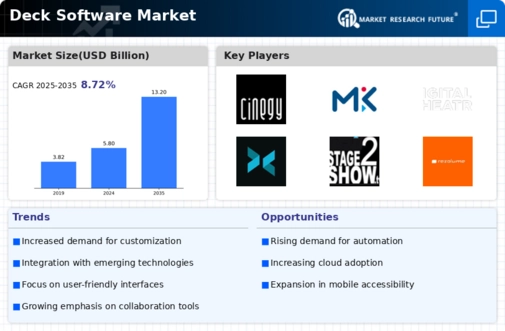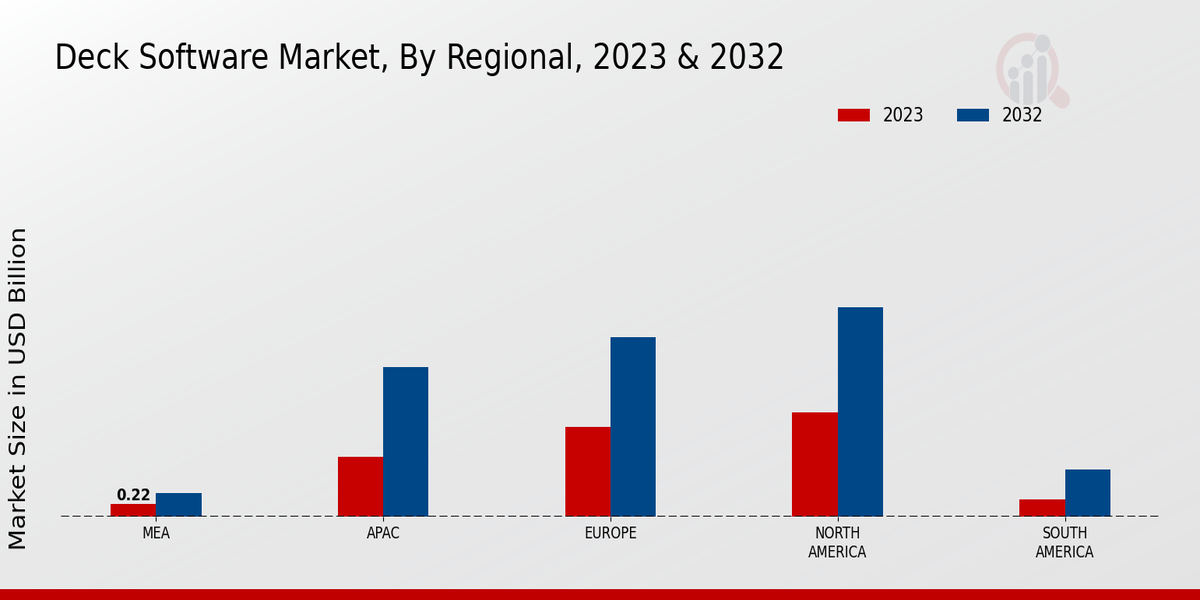The Deck Software Market is characterized by a dynamic landscape where various players strive to secure their positions through innovative offerings and strategic initiatives. As the demand for versatile and user-friendly deck software continues to expand across multiple sectors such as education, corporation, and entertainment, competition has intensified.
Key players are not only focusing on improving functionality but also enhancing user experiences to capture a larger market share. The constant evolution of technology has led to the incorporation of advanced features such as real-time collaboration, seamless integrations with other software solutions, and customizable templates, making it essential for companies to stay ahead of the curve.
This competitive environment encourages businesses to adopt aggressive marketing strategies, develop unique selling propositions, and build strong customer relationships to differentiate themselves.
Ecamm Live has carved a niche within the Deck Software Market by emphasizing performance and user-friendliness. The software boasts a comprehensive suite of features designed to enhance live streaming and presentation experiences, catering particularly to content creators and professionals seeking to elevate their visual storytelling.
Its strengths lie in its intuitive interface, robust performance capabilities, and integration with various streaming platforms, which allow users to create high-quality broadcasts effortlessly. The emphasis on continuous updates ensures that users benefit from the latest advancements in technology, helping them to remain relevant in a rapidly evolving market.
Customers appreciate the responsive customer support and an active community of users who foster knowledge sharing and collaboration, further solidifying Ecamm Live's position in the competitive landscape of deck software solutions.
ProPresenter, another prominent name within the Deck Software Market, is well-regarded for its capabilities in live event presentations and worship services. It offers a wide range of functionalities that enable users to create visually engaging and professional-grade presentations with relative ease.
The user interface is designed with simplicity in mind, allowing presenters to focus on content delivery rather than getting bogged down by technical challenges. ProPresenter stands out with its powerful media management features that support various formats, enabling seamless transitions and dynamic presentations.
Additionally, its robust support for multi-screen output is highly valued among users looking to enhance their audience engagement during events. ProPresenter's commitment to user satisfaction and continual improvement has allowed it to remain competitive, fulfilling the diverse needs of its clientele within the deck software market.




















Leave a Comment